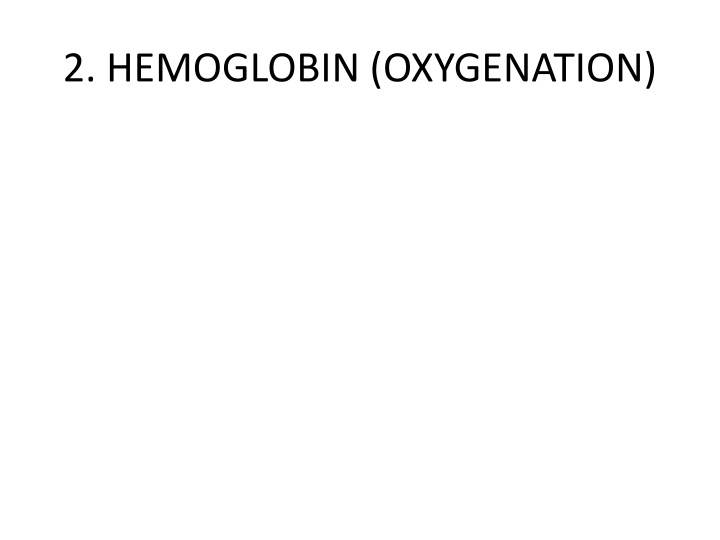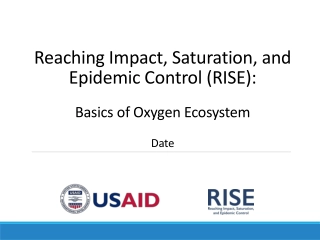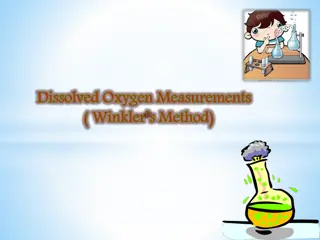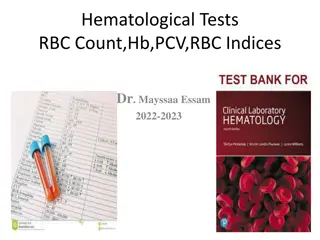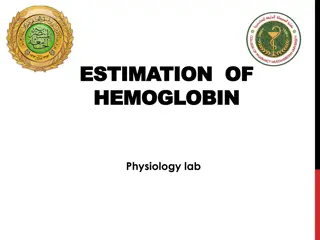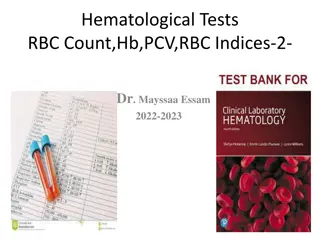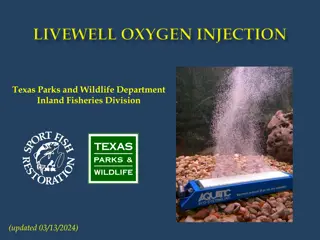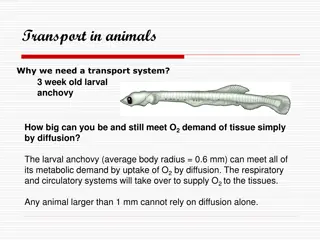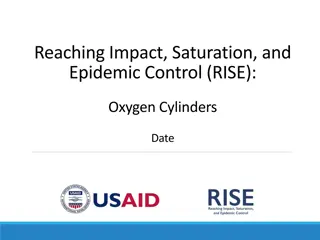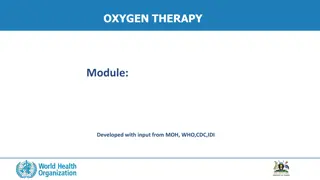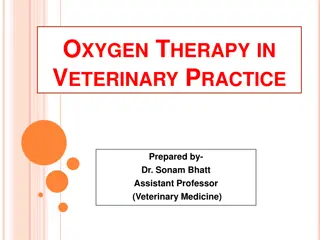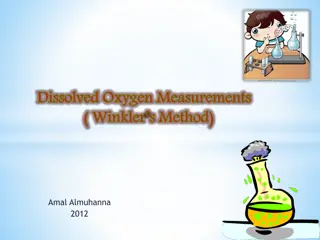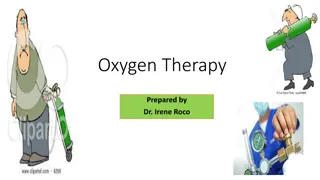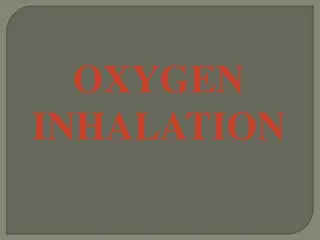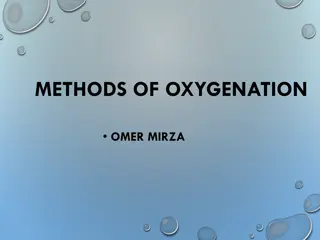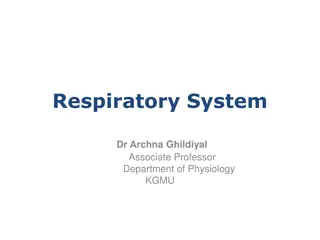Hemoglobin as Oxygen Carrier in Living Systems
Living systems utilize oxygen for energy production through controlled oxidation processes. Hemoglobin, a vital protein, transports oxygen from the lungs to tissues in mammals. Its unique properties, including the reversible binding of oxygen within a porphyrin ring system, play a crucial role in efficient oxygen transport. Hemoglobin's molecular structure, consisting of four subunits with heme groups associated with globin proteins, enables effective oxygen binding and release. The complex coordination of histidine side chains and iron within hemoglobin enhances its oxygen-carrying capacity. Explore how hemoglobin facilitates oxygen delivery in the body.
Download Presentation

Please find below an Image/Link to download the presentation.
The content on the website is provided AS IS for your information and personal use only. It may not be sold, licensed, or shared on other websites without obtaining consent from the author.If you encounter any issues during the download, it is possible that the publisher has removed the file from their server.
You are allowed to download the files provided on this website for personal or commercial use, subject to the condition that they are used lawfully. All files are the property of their respective owners.
The content on the website is provided AS IS for your information and personal use only. It may not be sold, licensed, or shared on other websites without obtaining consent from the author.
E N D
Presentation Transcript
Living systems can use O2 for controlled oxidation to supply the energy they need. Hemoglobin is
an O2 carrier in mammals from the lungs to the tissue. It is remarkable that O2 does not oxidize
hemoglobin, considering the redox potentials for the reduction of O2 and oxidation of Fe2+ .
The reversible binding of O2 in hemoglobin is due to the unique features of the porphyrin ring
system and the hydrophobic blocking of the large protein (globin). It will be discussed in detail.
Figure 6: A porphyrin ring system with coordinated iron (heme group).
The molar mass of hemoglobin is about 64,500. There are four subunits (a2 2) each of which
contains one heme group (an iron complex of porphyrin), associated with the protein globin. Two
of the subunit proteins form alpha (a) chains of 141 amino acids, and two form beta ( ) chains of
146 amino acids. The chains are coiled so that a histidine side chain is coordinated to Fe on the
proximal side of the porphyrin ring. The sixth site is occupied by O2 in oxyhemoglobin (upon
oxygenation); in deoxyhemoglobin it is vacant or substituted by H2O.
2.1 Dioxygen as a ligand and the oxygenation process
Consider the molecular orbitals of O2 to understand its properties as a ligand:
If 92 kJ/mol of energy is supplied, the spin-pairing can occur, then the other 2pp* orbital becomes
empty. O2 is therefore a mild p- acceptor ligand, and it coordinates in a bent end-on fashion to
Fe(II) at the distal side of the porphyrin.
The mechanism of oxygenation can be explained by considering the coordination chemistry
involved. Deoxyhemoglobin has a high-spin distribution of electrons, with one electron occupying
the dx2-y2 orbital that points directly to the four porphyrin nitrogen atoms. The presence of this
electron in effect increases the radius of the iron atom in these directions. Repulsion with the lone
pair electrons of the nitrogen atoms results in an iron atom lying ~0.75 out of the plane of these
Figure 7: The deoxy and the oxy forms of hemoglobin.
When an oxygen molecule becomes bound to the iron atom in the sixth position (opposite the
imidazole nitrogen atom), the ligand field is strong enough to cause spin- pairing, giving a low-spin
occupy the three t2g orbitals( dxy, dxz, dyz). The dx2-y2 orbital is then empty and the previous effect of an electron occupying this orbital in repelling the porphyrin
nitrogen atoms vanishes. The iron atom is thus able to slip into the centre of an approximately
planar porphyrin ring and an essentially octahedral complex is formed.
The four pyrrole nitrogens of the highly conjugated porphyrin macrocycle form s bonds with the
cause the withdrawal of p-electron density from the porphyrin ring, thereby strengthening the iron to porphyrin nitrogen p bonds (enhanced p back-bonding), and thereby weakens the bonds of the axial ligands and therefore the sixth position.
However, the mutual interaction between the axial ligands is influenced by the trans effect . The
more basic imidazole nitrogen at the proximal side displaces more electron density to the trans
position to strengthen the Fe-O2 bond (promotes oxygenation).
Fe(II) heme which is not attached to the globin (protein) cannot bind oxygen in aqueous solution,
but instead is oxidized to the Fe(III) form which no longer binds O2. The influence of the distal
nitrogen and the globin part is in such a way to avoid too much electron transfer from the Fe(II) to
the O2. The distal nitrogen limits the size of the sixth coordination site, so that the bonding mode of
O2 is bent, which lowers the affinity for e-density from Fe(II) and promotes reversibility.
The hemes are bound in cavities which are surrounded by hydrophobic groups and this low
dielectric constant millieu inhibits charge separation which occurs upon oxidation and such an
environment is required for reversible oxygenation.
As the iron atom moves upon oxygenation (from a tensed unligated deoxy form to the relaxed
